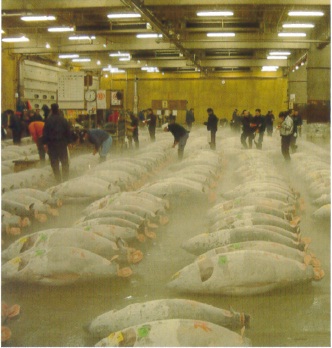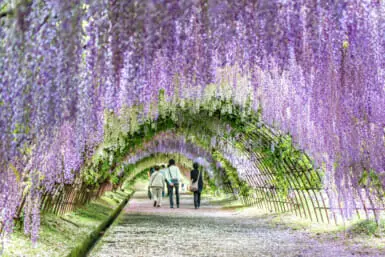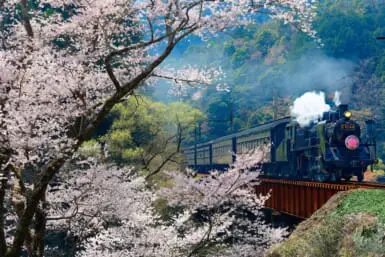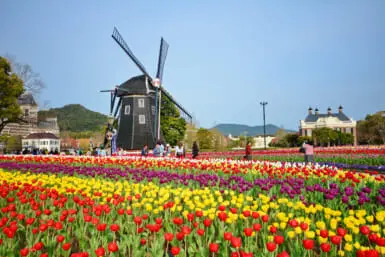Hillel Wright joins the fishermen
Japan is the world’s greatest importer of fish and seafood products, and the largest point of distribution by far is Tsukiji Fish Market. Located in central Tokyo, it is perhaps the biggest wholesale fish market in the world. More than 2.25 million kilos of fish pass through Tsukiji Market every morning, accounting for about 35 percent of all fish sales in Japan. The market opens in the darkest hours of the morning, but the sheer energy and exuberance of the market at 4am, quite literally in some ways, transports the visitor into another world.
The Tokyo Municipal Government established Tsukiji Fish Market in 1935 as part of a major re-building project following the Great Kanto Earthquake of 1923. Most of the city’s private markets had been destroyed by the disasater. Tsukiji Fish Market has its roots in the late 16th and 17th centuries, when the uogashi, or shoreline fish markets developed alongside the city of Edo.
As fishermen from across Japan brought their products to Edo, it wasn’t long before various enterprising middlemen created networks for distributing the surplus fish to eager customers both in the city and beyond. Many of today’s wholesalers, retailers, and sushi shop owners are descendants of those feudal era entrepreneurs.
In order to really see, hear, smell, feel, and appreciate Tsukiji, you must be like a fisherman and wake up long before the first light of dawn. Even if you’re out of bed by 3am, the market is already dressed and ready for action. The last reefer trucks are disgorging boxes of fish on the Tokyo Bay-facing platform, and the fish packing vessels are off-loading their finny and scaly cargo onto the same platform that also serves as their dock. The quiet of the night is jarred by the racket of propane-powered motorized pallets scurrying back and forth, in and out of the Market proper, loaded with boxes of fresh or frozen fish.
One 3am in March, my wife Shiori and I woke up in our hotel room at the Tokyu Stay Higashi-Ginza, just minutes from Tsukiji Market. By 4am we were on our way after meeting our guides Naoto Nakamura and Eizaburo Yoshino near the well-known Honganji Temple and about a 5-minute walk to the central Market.
After a brief stop at Namiyoke Shrine in front of the market, where fishermen and fishmongers often stop to pray for safety and success, we stepped into a wideawake world of bustle and sensual stimulation. Our eyes were adjusting to millions of watts of overhead lights, highlighting the dramatic array of colorful fish — scarlet red, canary yellow, ocean blue and forest green — laid out in seemingly endless rows of white styrofoam boxes.
The salt smell of the sea lingered over the fresh fish section of the market, while an eerie will-o’-the-wisp of mist obscured the ghostly shapes of the buyers shuffling around the frozen tuna auction, inspecting the ranks of giant, frost-covered corpses.
By 4:30am, we were watching the shrimp auction, where participating wholesalers, middlemen, and auctioneers employed a mysterious sign language of cards, gestures, and numbers. For the next hour we moved around the cavernous and labyrinthine complex, through the sea urchin (uni), fresh fish and live fish auctions, and out to the loading dock to watch the arrival of swordfish and marlin from around the world.
Finally, from 5:40-6:15am, we watched the tuna auctions, Tsukiji’s ‘big show.’ First came the fresh tuna, then frozen, and finally the impressive butchering of a huge maguro (tuna) by a master fish cutter. Wielding a samurai-inspired sword, he expertly carved the giant tuna for sale to dozens of sushi shops, where in a few short hours, thousands of hungry office workers would devour it.
You can visit Tsukiji Market on your own after 8:30am, but by this time practically every last fish is in or on its way to a fish store, restaurant or supermarket. Most guided tours are short — from 5:30-6:15am — and only attend the tuna auctions. The tour we took is the most complete (and fully bilingual) available, and both guides are former fish dealers who know all the insiders, from auctioneers to government officials. They can also steer you to the best places in and around the market to eat sushi.
External Link:
Tsukiji Market









